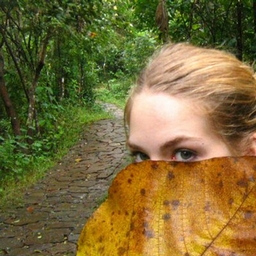
Rachel Nuwer
Freelance journalist for NYT, SciAm, Nature & more. Author of I FEEL LOVE (2023) and POACHED (2018).
Articles
-
3 weeks ago |
virginislandsdailynews.com | Rachel Nuwer
Wildlife managers in Africa tend to take a big-stick approach to combating poaching. Vast sums have been poured into militarized ranger patrols, advanced surveillance technologies, sniffer dogs and helicopters. Many of those efforts are aimed at protecting rhinos, whose horns are still in demand in China and Vietnam. For all the resources invested in rhinos, however, a relatively affordable and straightforward tactic seems to be most effective at preventing their killing: removing their horns.
-
1 month ago |
science.org | Rachel Nuwer
Hummingbird feeders are a beloved pastime for millions of backyard birders and a convenient dining spot for the birds. But for the Anna’s hummingbird, a common species in the western United States, feeders have become a major evolutionary force. According to research published this week in Global Change Biology, artificial feeders have allowed the birds to expand their range out of Southern California up to the state’s northern end. They have also driven a transformation of the birds themselves.
-
1 month ago |
scientificamerican.com | Rachel Nuwer
This Nature Outlook is editorially independent, produced with financial support from Avadel. Miranda cannot remember a time in her life when she did not have insomnia. The 23 year old, who asked for her last name to be withheld, started struggling with sleep when she was a child. As she’s grown older, it’s only become worse. She takes “a myriad of medications” each night, she says, but usually still cannot fall asleep until the early hours of the morning.
-
1 month ago |
scientificamerican.com | Rachel Nuwer
This Nature Outlook is editorially independent, produced with financial support from Avadel. I never had issues with sleep until the COVID-19 pandemic. A couple of months into lockdown in 2020, I found myself unable to fall or stay asleep. My worries played on an unstoppable loop, and the longer I lay in bed, the more anxious I became about not sleeping. This vicious cycle left me exhausted. After a few months, I became depressed. It was time to get professional help.
-
1 month ago |
science.org | Rachel Nuwer
Hummingbird feeders are a beloved pastime for millions of backyard birders and a convenient dining spot for the birds. But for the Anna’s hummingbird, a common species in the western United States, feeders have become a major evolutionary force. According to research published this week in Global Change Biology, artificial feeders have allowed the birds to expand their range out of Southern California up to the state’s northern end. They have also driven a transformation of the birds themselves.
Try JournoFinder For Free
Search and contact over 1M+ journalist profiles, browse 100M+ articles, and unlock powerful PR tools.
Start Your 7-Day Free Trial →X (formerly Twitter)
- Followers
- 9K
- Tweets
- 2K
- DMs Open
- Yes

Eagles are sacred to Native Americans. But poaching and trafficking of feathers is on the rise, thanks to the powwow industry & increasing popularity of peyote ceremonies. In Oklahoma, two fiery Comanches are trying to do something about it. @AudubonMag https://t.co/6VCijT7ZzA

The other truffle foragers: foodie gorillas! @sciam @TheWCS https://t.co/A1gLbzSZZM

Shorn horns - not guns - is the most effective way to protect rhinos from poachers. @nytclimate https://t.co/ZOCjIhbP5K